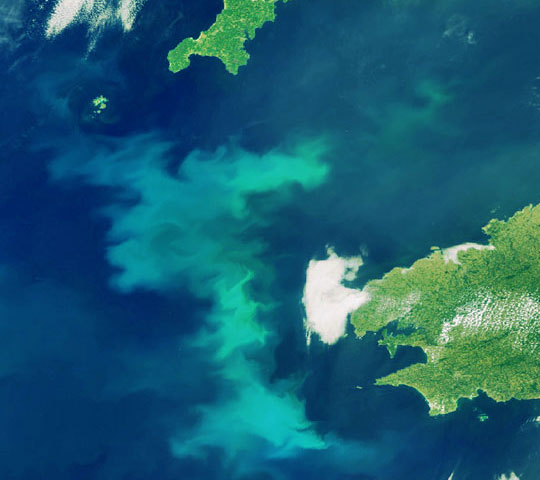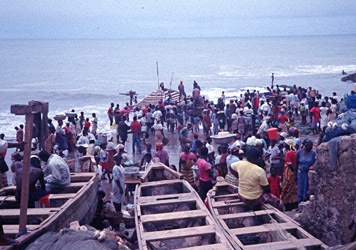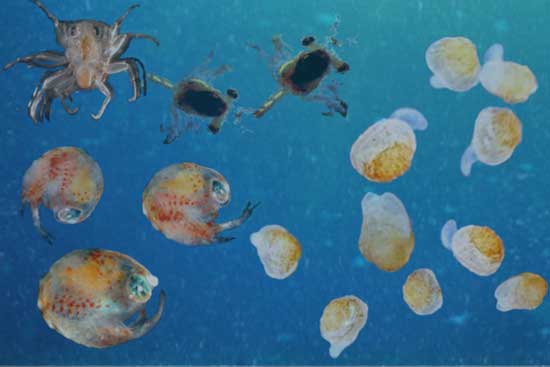1. How Currents Affect Us (2/4)
Fisheries and aquaculture
Fish provide a source of food and creates employment across the world. About 40% of the protein supply in developing countries come from fisheries and aquaculture (FAO); in some countries this percentage is much higher.

Source: ESA Image Archive.
Rich fisheries often occur where different currents meet and mix in ocean fronts. Current eddies are also fertile feeding grounds for marine life. So are areas with strong current flow over submerged ridges and mounds; the bloom on the left is an example.
The international fishing fleet uses increasingly sophisticated techni- que to identify such areas of increased productivity. Authorities in charge of fisheries policy may use the same information to help them decide where to concentrate their efforts to enforce fishery regulations.
Aquaculture: Caged fish and attached species like oysters and mussels cannot escape and are exposed to whatever ocean currents bring their way.
For example, unusually high sea surface temperatures have caused multi-million dollar kills of Australian tuna, algal blooms can kill caged salmon by suffocation, and shellfish poisoning is a regular summer hazard when shellfish are exposed to toxic blooms. Being able to monitor such events and predict how they will evolve can reduce economic loss and damage to human health.
Sustainable resource management

As populations grow, the pressure on fisheries increase. Already 70% of marine fish stocks are seriously affected by commercial fishing. Artisanal fisheries, vital for populations in the developing world are losing out to competition from the international fishing fleet.
Aquaculture is increasingly important as an alternative, but is often carried out in a way that damages the environment and poses a threat to wild stocks of fish and shellfish.
Yet if we adopt an ecosystem approach to management of fisheries and aquaculture, these industries can yield at least as much food as they do at present. Link to Marine Stewardship Council.
The key role of ocean currents
An ecosystem approach to management starts with an understanding of the physical environment, and how it interacts with chemistry and biology.

Marine ecosystems are strongly influenced by salinity, temperature and the flow of ocean currents. Currents affect the availability of nutrients for plant growth, and thus the availability of food for marine animals. Eggs and larvae of fish and other animals drift with the currents from the spawning grounds to nursery areas where they feed and grow. Currents also influence where bottom-dwelling species such as crabs, lobsters, and shellfish settle as adults.

